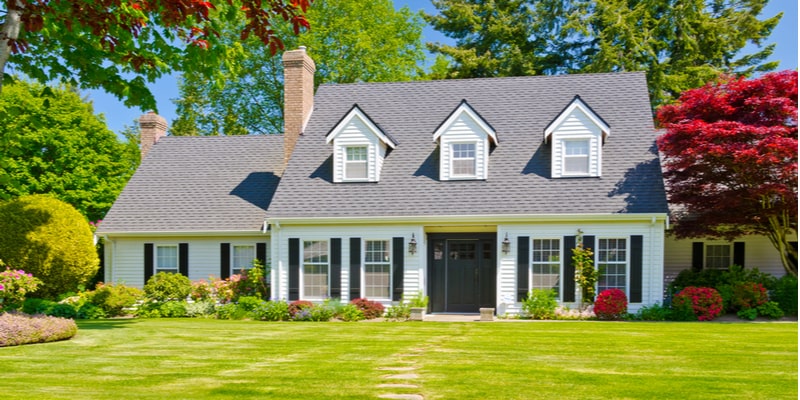Gutters 101: How Rain Gutters Protect Your Home

Due to regional tastes and architectural styles, not all homes have roof gutters. However, for most homes and commercial buildings, the need to channel rainwater from the roof to the ground requires the use of rain gutters.
Evaluating Rain Gutters
As the name suggests, rain gutters are troughs placed at the bottom edge of your roof to collect and channel rain run-off. In this way, your foundation is protected from becoming flooded by the water that would otherwise pool on the ground beneath the roof, potentially causing structural damage such as cracks and basement flooding.
There are many types and styles of rain gutters available to homeowners.Rain gutters come in several types, sizes and shapes called profiles. These include U or half-round shapes as well as K configurations, in which the gutter front when viewed from the side, looks like the letter K.
Most residential rain gutters come in two sizes, 5 or 6 inches, and are made of either aluminum, galvanized steel or copper in a standard "K" style. The typical 5-inch K-style gutter comes with 2-inch x 3-inch downspouts. A larger, 6-inch residential rain gutter system would consist of a 6-inch K-style gutter, using a 3-inch x 4-inch downspout. One foot of 5-inch K-Style gutter holds 1.2 gallons of water. One foot of 6-inch K-Style gutter holds 2.0 gallons of water.
The most popular residential rain gutter type is seamless aluminum. The metal comes on a long roll and it's formed into the shape and length required.Originally only available in silver, early aluminum rain gutters soon were painted white, and eventually painted in a variety of colors to match house siding, roof and trim, making rain gutters not only functional but a design feature as well.
Rain Gutters Protection
Every home needs gutter protection from excess rainwater because overflowing gutters and leaking water from your gutters, can damage your home. A solid, undamaged roof is the first line of protection for a house, along with well-fitting windows and doors; vinyl, aluminum or painted wood siding; and fascia and soffit trim.
But for all these elements to work well, a house needs rain gutter protection. Rain gutter protection is an important factor in properly maintaining the integrity of your home. Rain gutters collect rainwater as it falls to the roof and channels it safely through downspouts to the ground.
But if you have ordinary open gutters, they can collect leaves, twigs and other debris, which can:
- Create leaks around windows and doors
- Cause rot to develop around your eaves, soffit, and fascia
- Damage your flower gardens and shrubbery
- Seep into the ground around your foundation, which eventually causes cracks and basement flooding
- Attract pests, critters, insects, and mold.
- Put you in danger while climbing ladders to clean out your gutters.
The Best Rain Gutters
The solution to this problem is the protection of a covered rain gutter which sheds leaves and debris to the ground while capturing rainwater and moving it safely away from your home.
The best rain gutter protection on the market today is a LeafGuard® rain gutter system. Its proprietary design includes a built-in hood that deflects debris from clogging gutters, eliminating water damage to your roof, siding and foundation. LeafGuard is also stronger and more durable than any other gutter system available, handling 32 inches of rain per hour, over three times the record rainfall ever recorded by the US Weather Bureau.
Learn why LeafGuard gutters are America’s most trusted rain gutter protection.
-
Gutters 101: Benefits of Seamless Gutters

Gutters 101: Benefits of Seamless Gutters
Learn the solution to the age-old problem of water diversion -
Are gutter guards worth getting?

Are gutter guards worth getting?
Gutter guards can help improve water flow, reduce gutter maintenance, and protect your home. Learn more about the pros and cons of gutter guards.